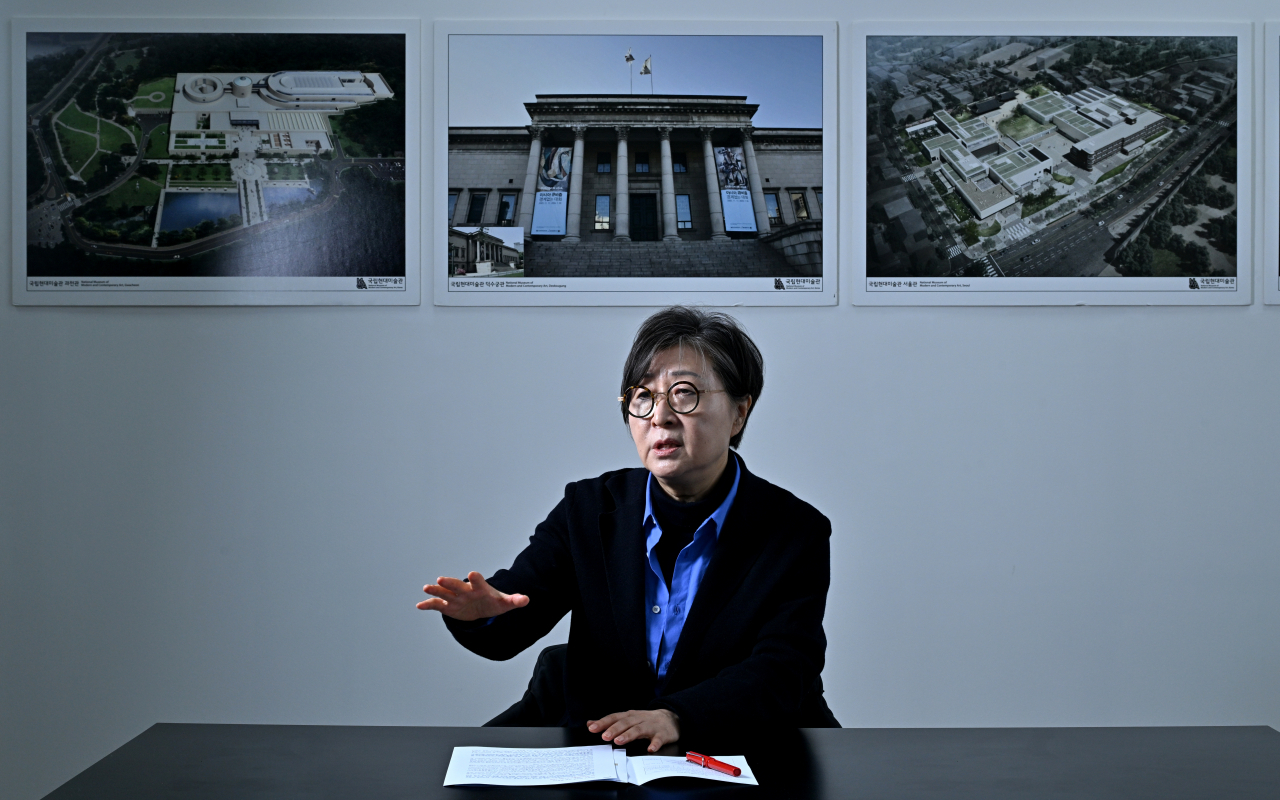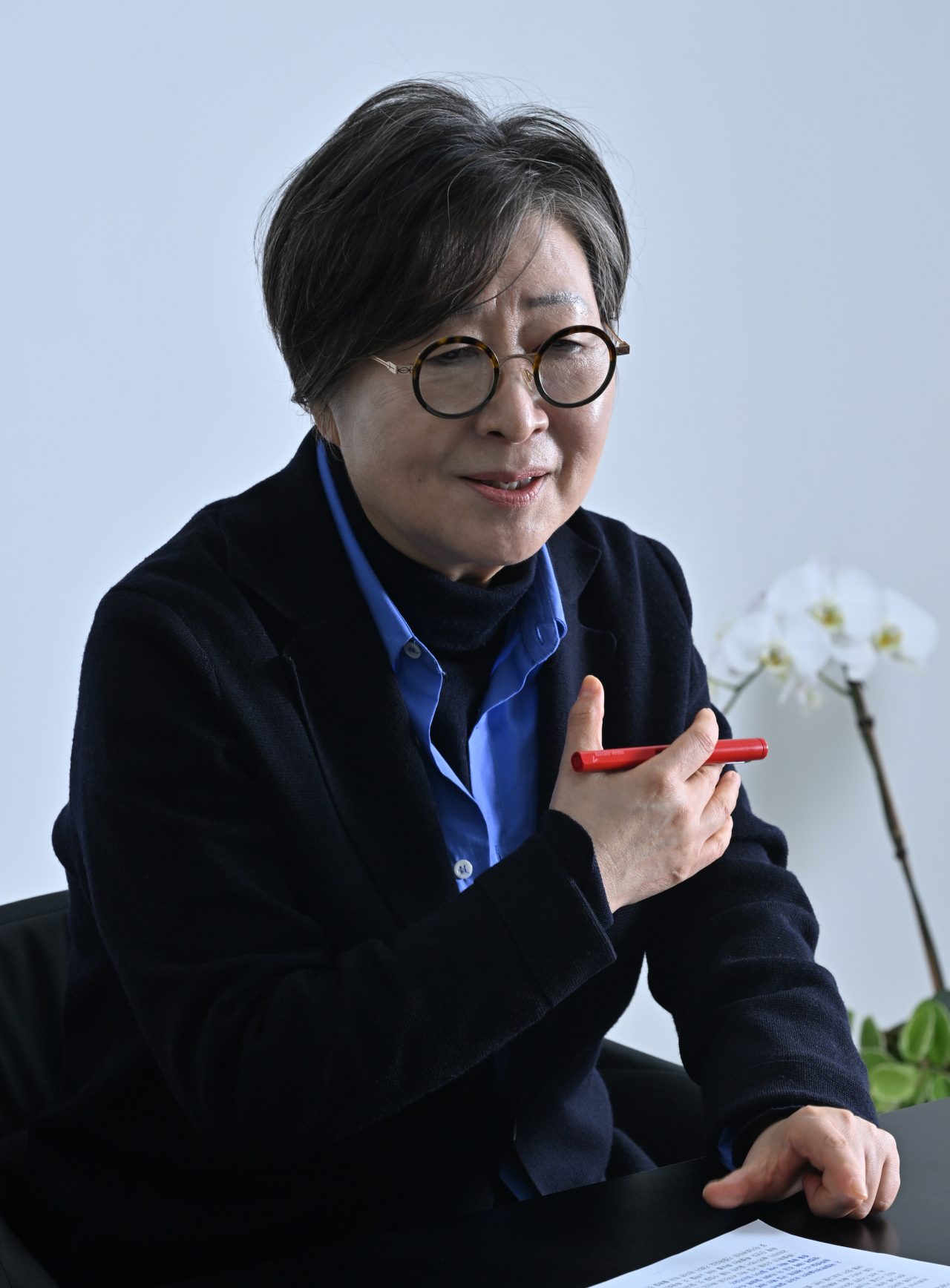[Herald Interview] Korea must have strategy to promote art globally: MMCA Director Kim Sung-hee
By Park YunaPublished : Feb. 14, 2024 - 17:55

As the Korean cultural scene has gained in stature globally, its art scene is being recognized widely as well. With that momentum, Kim Sung-hee, director of the National Museum of Modern and Contemporary Art, Korea, argues that it is time to draw up a strategy for pushing Korean art on the global scene.
“Korea has a variety of art content that has accumulated for thousands of years. Now, we need a strategy at the national level to herald Korean art, turning the popularity of Korean culture into an opportunity," Kim said in an interview with The Korea Herald on Feb. 1.
The increase in the number of foreign visitors to the MMCA, Korea reflects growing global interest in Korean art and culture. The number of visitors reached more than 200,000 last year, a five-fold increase from 2022, according to the MMCA. The figure stood at 162,326 in 1999, the year before COVID-19 disrupted travel and strict social distancing was introduced.
Kim, a former associate professor at the Department of Curatorial Studies and Art Management at Hongik University who took office in September, said it took almost four months to get a grasp on the museum system and civil service -- something she is still learning.

“When I was an outsider, it was easy for me to criticize the way the museum functions, but now I understand it is not an easy thing to run the national museum as a public official. We need to listen to many opinions, from the government to the museum employees and the visitors," she said.
In discussing the lack of a strategy to promote Korean art globally, Kim cited the example of how American art grabbed the global spotlight in the contemporary art scene following World War II.
"They were strategic and knew why art is important and how they should spend money to promote their art and artists. They got European philosophers of modernism to do research with young American philosophers. That is how postmodernism evolved and American art and culture took center stage afterward,” she said.
At a New Year's press conference, Kim pledged the launch of a research fellowship program to encourage interaction and discourse between Korean and foreign scholars. The aim is to spread Korean art with in-depth research.
“The time has ripened for Korean art to be shown globally with a national strategy,” Kim said. "We are still far behind in that."
She shared her thoughts on criticism about the museum that "it was just sitting around" when the global art fair Frieze Seoul arrived two years ago. The Korean art scene turns festive around the art fair in September, with galleries and museums highlighting their exhibitions. The week has come to be dubbed "Korean Art Week."
"As far as I know, the museum took a careful position, as it is a national institution, to respect those who are not part of the commercial art fair," she said. "This year, we will show an exhibition that brings together Asian female artists around that time. This was planned before I joined the museum."
"For next year, I think we will have to make an active move to promote Korean artists during the art week," she said.
In an effort to promote Korean art globally, the museum is organizing and running exhibitions of Korean art at overseas institutions, including “Only the Young: Experimental Art in Korea 1960s-1970s” at the Hammer Museum in Los Angeles in February. The traveling exhibition attracted more than 250,000 visitors at the Guggenheim Museum in New York after it was shown at the MMCA, according to the museum.
More than 40 Korean artists will be shown in Taiwan in “The Modern and Contemporary Korean Writing” exhibition in July, and the "Lee Kun-hee collection" will tour through the Smithsonian’s National Museum of Asian Art, Art Institute of Chicago and the British Museum from 2025 to 2027. The touring exhibition shows some 250 modern and contemporary Korean works of art collected by the late Samsung Chairman Lee Kun-hee.
Since the Lee Kun-hee collection was donated to the museum in 2021, more people have opened up to donating valuable works to the museum, said Kim, which will ultimately strengthen the museum's collection. The museum's annual budget for purchasing artwork for this year is 4.7 billion won ($3.5 million), a figure which has been decreasing since the pandemic began.
"The national museum used to focus on Korean artists, but we should raise our status globally by strengthening our collection more internationally," she said.
"We will make the most of the MMCA Foundation to get more Korean businesses interested in fundraising and donating. What we have to do is to give credit and honor those who make such contributions," she said.
Kim added she will also plan more exhibitions to shed light on donated works.
"It is not a change that can happen in a year or two. But we will do what we have to do."



















